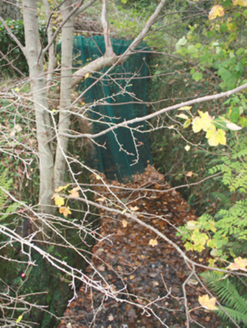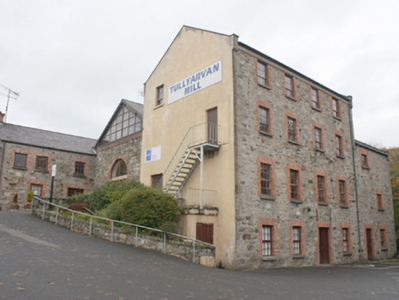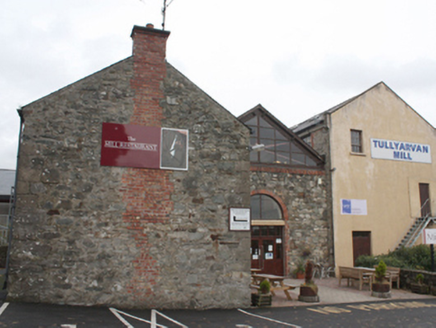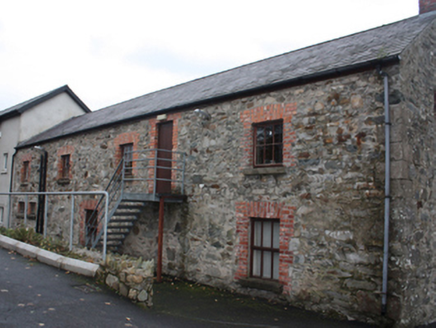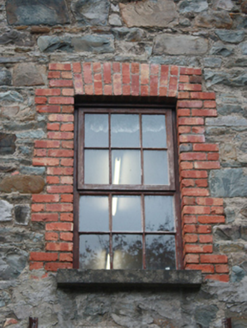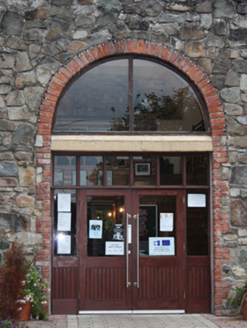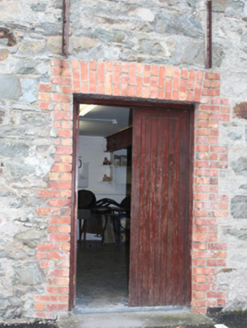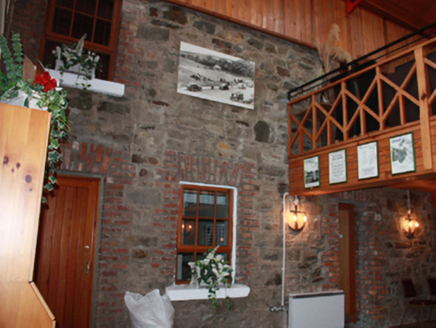Survey Data
Reg No
40902923
Rating
Regional
Categories of Special Interest
Architectural, Technical
Original Use
Mill (water)
In Use As
Hostel
Date
1910 - 1930
Coordinates
234948, 433127
Date Recorded
22/10/2008
Date Updated
--/--/--
Description
Detached multiple-bay two- three- and four-storey former mill complex, built c. 1810 and extended c. 1855 and c. 1919. Originally in use as a corn mill, later is use as chemical mill and as a hat production facility. Converted for use as a corn mill in 1919 and extended. Later in use as a cattle and poultry feed production site from 1929 until 1945. Now in use as a hostel, conference centre and business enterprise unit with large modern extension to the north built c. 1992. Pitched natural and artificial slate roofs with clay ridge tiles, raised rendered verges to some gable ends, cut stone kneeler stone detailing to eaves to a number of the blocks, red brick chimneystack to block to the west. Randomly coursed rubble stone walls with flush roughly dressed block-and-start quoins to the corners; cement rendered finish to some sections. Square-headed window openings with flush red brick block-and-start surrounds, replacement timber casement windows, and concrete sills. Square-headed door openings with flush red brick block-and-start brick surrounds, and replacement timber doors and double-doors. Double-height entrance hall with exposed metal trusses and timber boarded ceiling. Complex set back from road to the west bank of the Crana River, to the north of the centre of Buncrana. Remains of former mill race to the north-west, now dry.
Appraisal
Despite being now extended and converted to new uses, this substantial former industrial complex remains much of its original form and character. It is robustly constructed using local rubble stone masonry with good quality quoins to a number of the corners. The use of red brick to form the surrounds to the openings is typical of many industrial buildings of its type and date, and adds an element of textural and tonal interest to this otherwise utilitarian complex. This complex was extended and altered on a number of occasions, which creates a confusing chronology that is characteristic of many nineteenth century industrial complexes. This complex was originally built or altered by a James Wilson during the first decades of the nineteenth century as a corn mill. The late eighteenth and early nineteenth century was a boom period for the Irish corn milling industry, partially due to the restrictions on continental trade as a result of the Napoleonic Wars. It is likely that some of the two-and three-storey blocks to site were originally part of this initial mill to site. Wilson’s mill failed as a commercial enterprise by the late 1820s and the complex was taken over by a John Kennedy who operated a corn mill here. The complex was later in the ownership of a John Hamill, c. 1860, who extended the site and converted it for use as a chemical mill producing iodine from kelp collected from the shores of Lough Swilly. It was later partially in use as a hat producing facility for the firm Ashton of London. The mill appears to have fallen out of use by the start of the twentieth century. However, the mill was bought by an Andrew McGlinchey in 1919, who rebuilt the complex and formed the Tullyarvan Milling Company. The complex was later purchased by Swans in 1929 who ran a facility producing feed for cattle and poultry until 1945. Production at the mill ceased c. 1946 and the complex was mainly unused for storage until recent decades. It was restored and extended in the 1980s and 1990s by a local community enterprise group and put into a number of new uses. This former industrial complex is an interesting addition to the built heritage, and has been part of the social history of the local area for two centuries. The remains of the former mill race to site provides further insight into past industrial processes, and adds to the context.
